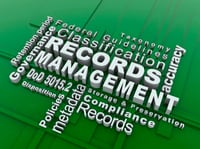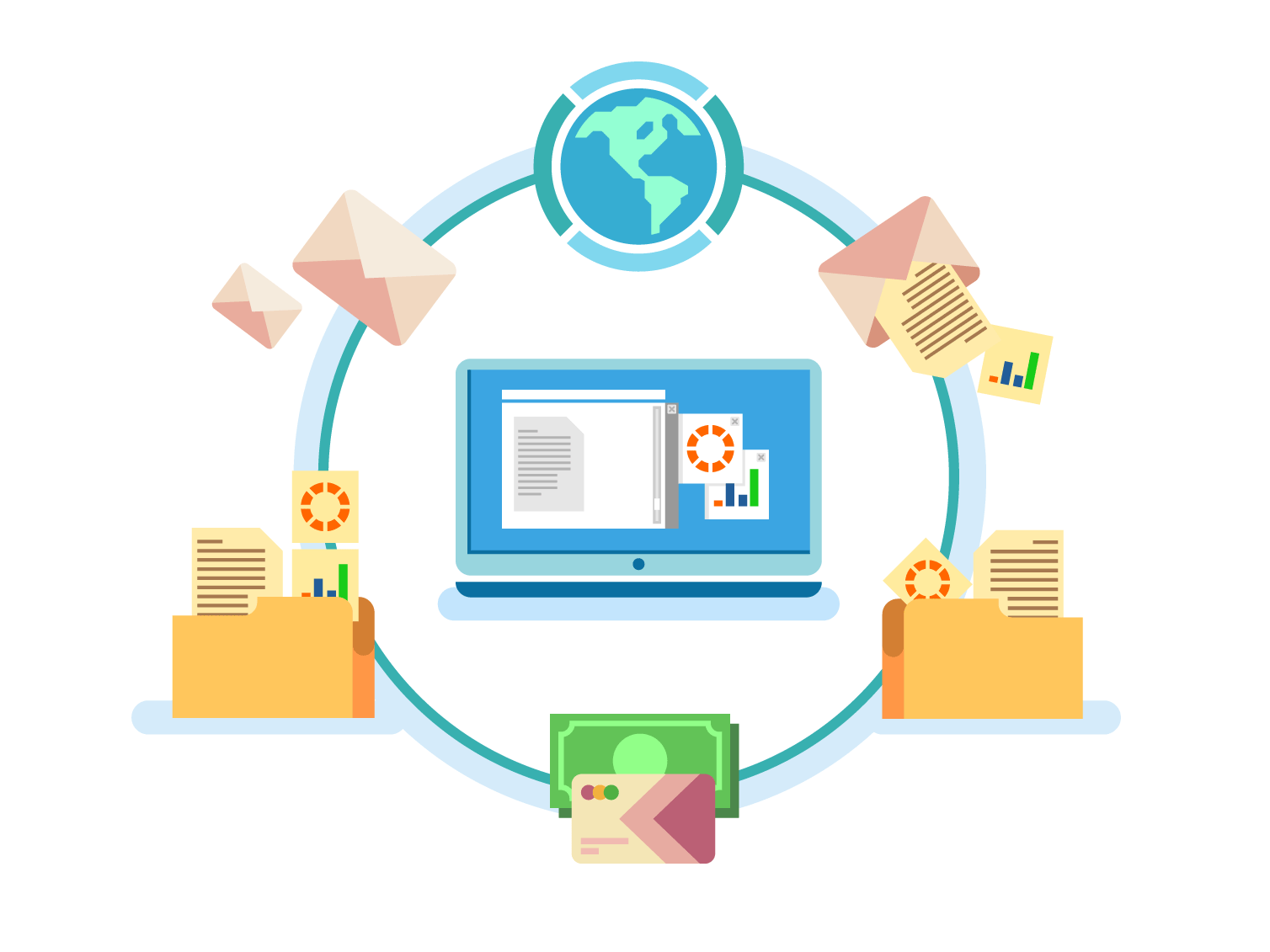5 Steps To Enterprise-Wide Integrated Records Management
by Sjoerd Alkema, on Jun 1, 2021 3:45:00 PM
A record management (RM) system is intended to store content for a long period of time, and to keep that content accessible all the while, while the correct retention and destruction policies are carried out. With an effective records management system, you get the most out of your records and you can decrease the costs and risks associated with poorly managed records. But a successful RM solution not only depends on the choice and implementation -- there is more to it.

Working with content in a decentralized manner can no longer be avoided. More and more (large) organizations are choosing to maintain their various content applications and repositories in stead of using one centralized repository. Their leaders realize that there is not one central solution for managing content that is sufficient for the entire organization. They acknowledge the use of multiple specialized applications in one fully integrated environment. For example, they use OpenText for incoming mail and primary processes, SharePoint for collaboration, Salesforce for CRM and SAP for ERP. All of these environments are both source and target (e.g. storage) systems for content.
Central records management
Although the use and the place where the content is stored differs, the same rules and regulations apply to archiving content. Because the many different systems and the exponential growth of content, files that are subject to specific retention or destruction policies are stored on different locations and/or different systems within the organization. Compliance to laws and regulations is, therefore, an enormous challenge.

Below are five steps to a central integrated RM environment. What is not taken into account is the (final) choice for the software solution, but these steps focus solely on embedding an Records Management solution in the organization.
1. AnalysisFirst of all, it is important to know where content that may be relevant to the RM system is located within the organization. An content analysis gives insight into the quality of the content; for instance, the quality and amount of the metadata and file types. This is essential input for a solid plan to create a central integrated Records Management system. From the analysis a plan can be made with realistic lead times, an overview of what connections are needed, which metadata enrichment is required and how the integration exactly looks.
2. Integrate
Ensuring that all content becomes available in the RM application, means that a connection must be made from the different source systems to the RM target system. This can be achieved through a content service bus. The content service bus is based on a unified data model and offers standard connectors for all popular content sources. Because of this the content service bus and unified data model there is an architecture that makes it easy to connect new sources without needing to change the integration with the RM application. A different integration possibility is to make the archive available in the source application. This goes beyond just configuring a content service bus, but may be a valuable addition to the integrated RM environment.
The content service bus also plays an essential role in the normalization of the content at different levels. Duplicates will be recognized and are, depending on the business rules, stored only once in the RM system or lead to reports to enterprise content managers or archive administrators.
Another aspect is the normalization to the unified content model. Through a one-time transformation all sources are connected to this model. This makes it easy to connect new repositories, but also ensures that the convertible business rules and enrichment (see step 4) always work the same.
4. Enrichment
An important aspect of the integration of repositories to a central RM system are missing metadata. For a successful RM system, metadata are essential. However, the source systems from which the content is derived are not always fully configured or do not contain possibilities to manage metadata; for instance, a file share.
The enrichment of metadata can be done in multiple ways. First, the content service bus offers the possibility to configure a variety of business rules. An example: If the content comes from the financial application and has metadata then it is an invoice and it belongs to classification X in the RM application. Or, if the document contains specific keywords, then it is part of the process Y.
Another possibility is to use auto classification. This type of machine learning can be used to recognize specific document types. This is done by training of the system and this is well usable when there is absolutely no metadata available. Auto classification is often used in combination with business rules.
5. ActivateGoing through the various stages is often a phased approach by source. This is also the case with the activation of the content service bus integration with the RM application. This allows for controlled testing to see if all content goes to the correct location in the RM system with the correct metadata. Setting up business rules and the use of auto-classification is an iterative process and the result may lead to changes in these rules.
After implementation, it is easy to adjust the business rules or auto-classification models. The flexible structure of the content service bus with the unified data model makes this very easy to realize this.
Conclusion
Are you thinking about the implementation of a new Records Management solution or a new configuration? The road to success does not lie simply in the choice of a solution and its implementation. You should be able to ensure the completeness and continuity. For this, you need to use the starting point that the creation and work with content continues to be decentralized, and on the other hand use auto classification and business rules so that employees do not need to fill out things manually.
With the last point, it is essential that organizational leadership is involved in the process from the beginning. The knowledge of employees, of processes, and content needs to be translated into automated rules. The start is always an analysis of the current situation. Without this insight, there is usually a bad plan and an even worse implementation of the solution.
--------------------------------------------------------------------------------




%20(300%20x%2060%20px)%20(3).png?width=635&height=127&name=ISO%20email%20signature%20(390%20x%2060%20px)%20(300%20x%2060%20px)%20(3).png)